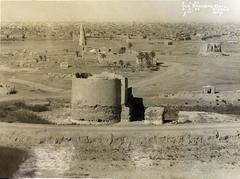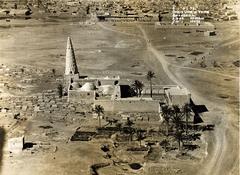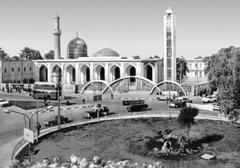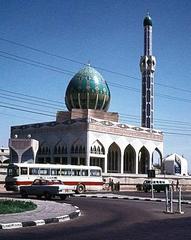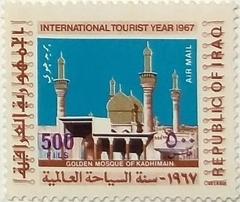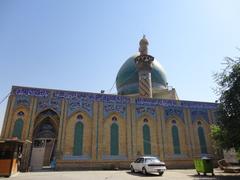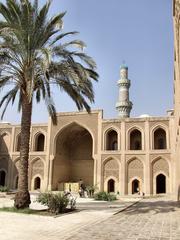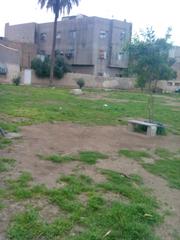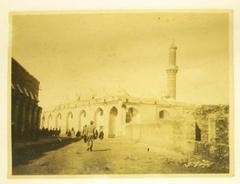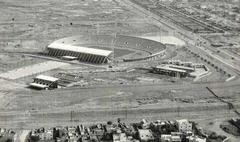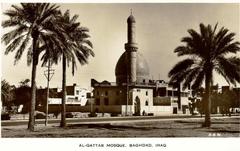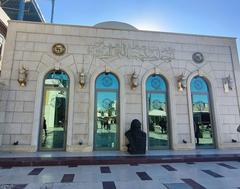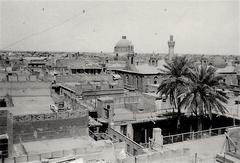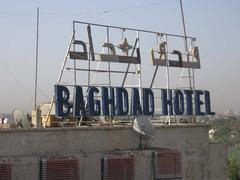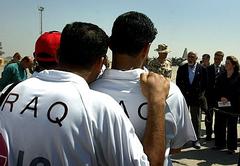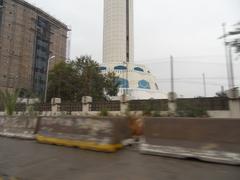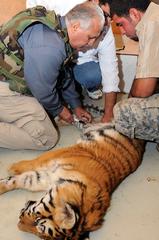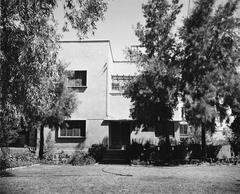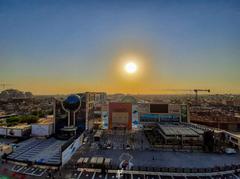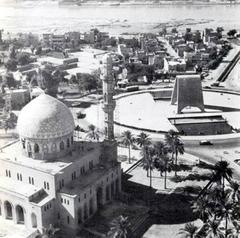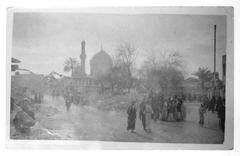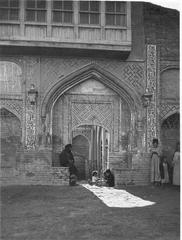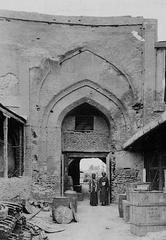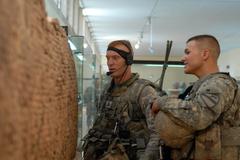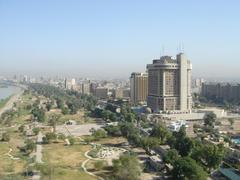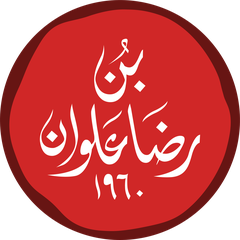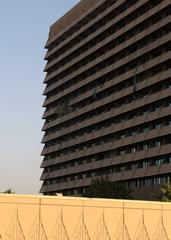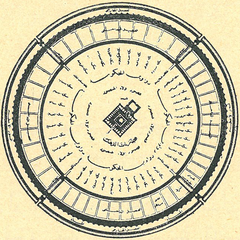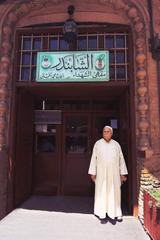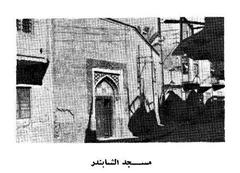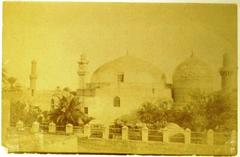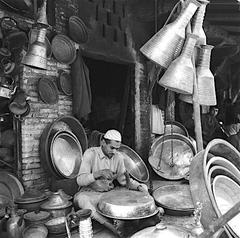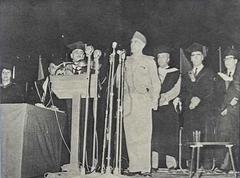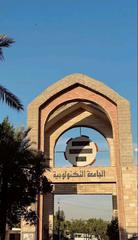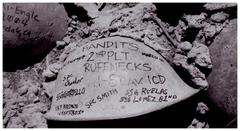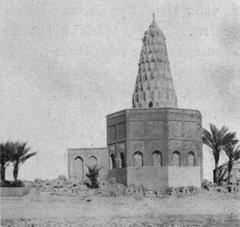
Mausoleum of Umar Suhrawardi: Visiting Hours, Tickets, and Comprehensive Guide to Baghdad’s Sufi Landmark
Date: 14/06/2025
Introduction
In the heart of Baghdad lies the Mausoleum of Umar Suhrawardi, a monument that encapsulates centuries of spiritual devotion, architectural ingenuity, and cultural resilience. Dedicated to Umar ibn Muhammad Suhrawardi (c. 1145–1234 CE), a celebrated Persian Sufi mystic and founder of the Suhrawardiyya order, the mausoleum is a focal point for pilgrims, history enthusiasts, and travelers seeking to experience Iraq’s rich Islamic and Sufi heritage. Its distinctive Seljuq-style conical dome, ornate brickwork, and enduring Sufi traditions continue to inspire reverence and curiosity, even as the site faces modern preservation challenges (Encyclopaedia Iranica; everything.explained.today; Middle East Eye).
This guide offers a detailed overview of the mausoleum’s historical context, architectural significance, religious and cultural role, preservation status, and essential visitor information, empowering you to plan a meaningful visit and appreciate one of Baghdad’s most iconic historical sites.
Historical Background
Origins and Foundation
Umar Suhrawardi, born in Suhraward, Iran, emerged as a leading Sufi scholar and was instrumental in shaping Baghdad’s spiritual landscape during the late Abbasid era. His teachings in law, mysticism, and community leadership attracted a devoted following, culminating in the establishment of the Suhrawardiyya order (Encyclopaedia Iranica). Upon his death in 1234 CE, his disciples and patrons erected the mausoleum near the Tigris River, cementing the site as a center for worship, pilgrimage, and Sufi instruction (Archnet).
Architectural Evolution and Restoration
Initially modest, the mausoleum’s structure evolved through periods of expansion and restoration. Its most prominent feature—the conical dome—embodies Seljuq and Abbasid influences, while intricate brickwork and Kufic inscriptions reflect the artistry of its era (everything.explained.today). The mausoleum has withstood historical upheavals, including the Mongol invasion and periods of neglect, owing to periodic renovations supported by both Ottoman and modern authorities (UNESCO; The Art Newspaper).
Architectural Features
The Conical Dome and Site Layout
Dominating the mausoleum’s silhouette is a ribbed conical dome, constructed with ten distinct layers:
- Lower Six Layers: Each features 16 convex niches with rectangular projections, creating a rhythmic pattern.
- Transitional Octagonal Motifs: These bridge the square base to the dome, a hallmark of Islamic architectural adaptation.
- Ribbed Cap: The pointed, ribbed upper section crowns the dome and is visible across the district (everything.explained.today).
The mausoleum is located in Baghdad’s al-Rusafa district, adjacent to the historic Sheikh Umar Cemetery, which has contributed to the site’s unique urban context and some of its preservation issues (archiqoo.com).
Exterior and Interior Ornamentation
- Exterior: The mausoleum’s façade is built with baked brick, featuring geometric patterns and a Kufic inscription above the entrance. The structure has developed a visible tilt due to ground subsidence from the surrounding cemetery (Middle East Eye).
- Interior: The prayer hall features faded painted ceilings, intricate calligraphy, and the wooden tomb of Umar Suhrawardi, draped in cloths by devotees. The mosque area contains a mihrab and minbar, both showing the marks of age and historical embellishments (trek.zone).
Artistic and Epigraphic Elements
Both inside and outside, the mausoleum is adorned with Quranic verses and Sufi poetry in Kufic and Naskh scripts, alongside geometric tilework and carved wooden panels. These details highlight the spiritual and artistic aspirations of the period (everything.explained.today).
Religious and Cultural Significance
Center of Sufism and Pilgrimage
The mausoleum is central to Baghdad’s Sufi community. Umar Suhrawardi’s teachings emphasized a blend of Islamic law and mysticism, and the site continues to host dhikr ceremonies, religious instruction, and commemorative gatherings (Oxford Islamic Studies Online; Brill Reference). Notable inscriptions, such as “Ala inna awliya Allah la khawfun ‘alayhim wa la hum yahzanun,” underscore the mausoleum’s spiritual role.
Historical Resilience
Surviving the Mongol sack of Baghdad in 1258 and subsequent centuries of upheaval, the mausoleum has benefited from periods of Ottoman patronage and modern restoration, even as it faced challenges from urban development and conflict (History Today; UNESCO Iraq).
Interfaith and Cross-Cultural Influence
While primarily a Sunni Sufi site, the mausoleum has long welcomed visitors from diverse backgrounds and faiths, symbolizing Baghdad’s tradition of knowledge and tolerance (Prepp.in; Ploverminds). The Suhrawardi order’s influence extends to South Asia, notably in Multan and Delhi.
Preservation Challenges
The mausoleum faces several preservation threats:
- Encroaching Cemetery: The adjacent cemetery’s expansion has led to ground subsidence, cracks in the dome, and a visible tilt in the structure (Middle East Eye).
- Environmental Stress: Pollution, water damage, and harsh weather have eroded the brickwork and interior ornamentation.
- Post-2003 Instability: Political unrest has hampered effective restoration, with occasional misuse of allocated funds (The Art Newspaper).
Despite these obstacles, local communities, religious organizations, and international bodies continue to advocate for and support restoration efforts (trek.zone).
Visitor Information
Visiting Hours and Tickets
- Hours: Open daily from 8:00 AM to 6:00 PM, with possible extended hours during major Islamic holidays and Sufi commemorations.
- Tickets: Entry is free; donations are welcomed and contribute to preservation.
Accessibility and Travel Tips
- Location: Al-Rusafa district, near Sheikh Umar Cemetery. Reachable by taxi or public transport; use reputable services and travel during daylight.
- Accessibility: Most areas are accessible, but uneven terrain and steps in older sections may pose challenges. Limited wheelchair access; inquire locally for assistance.
- Etiquette: Dress modestly, respect prayer times, and seek permission for photography, especially during religious ceremonies.
Guided Tours and Nearby Attractions
- Guided Tours: Available through local operators, offering in-depth insights into the mausoleum’s history and spirituality.
- Nearby Sites: Shrine of Abdul Qadir Gilani, Al-Mustansiriya University, Al-Kadhimiya Mosque, and Al-Mutanabbi Street.
Frequently Asked Questions (FAQ)
Q: What are the opening hours of the mausoleum?
A: Daily from 8:00 AM to 6:00 PM, with variations during holidays.
Q: Is entry free?
A: Yes, donations are appreciated.
Q: Are guided tours offered?
A: Yes, through local tour operators.
Q: Is the mausoleum wheelchair accessible?
A: Partially; some areas may be difficult to access.
Q: Is photography allowed?
A: Generally, yes, but respect religious activities and ask for permission when photographing people.
Visuals and Media
- Exterior view of the conical dome (alt text: “Mausoleum of Umar Suhrawardi conical dome in Baghdad”)
- Close-up of Kufic inscription at entrance (alt text: “Quranic inscriptions at Umar Suhrawardi Mausoleum entrance”)
- Star-patterned interior dome (alt text: “Star-patterned dome interior of Umar Suhrawardi Mausoleum”)
- Pilgrims at Sufi ceremony (alt text: “Pilgrims at Sufi dhikr ceremony in Umar Suhrawardi Mausoleum”)
Summary and Planning Tips
The Mausoleum of Umar Suhrawardi is a vital link to Baghdad’s spiritual and architectural legacy, a space where history, faith, and artistry converge. Its unique conical dome, intricate ornamentation, and living Sufi traditions make it a must-visit for anyone interested in Islamic culture or Iraq’s historical treasures. Visitors are encouraged to plan ahead, respect the site’s sanctity, and support ongoing preservation efforts.
Explore more with the Audiala app for up-to-date guides and news on Iraqi heritage, and consider combining your visit with other historical sites for a comprehensive cultural journey through Baghdad.
References and Further Reading
- Encyclopaedia Iranica
- Archnet
- UNESCO World Heritage Centre
- Al Jazeera
- The Art Newspaper
- Oxford Islamic Studies Online
- Brill Reference
- History Today
- Ottoman Archives
- UNESCO Iraq
- Middle East Eye
- everything.explained.today
- trek.zone
- Wikiwand
- Alavi Travel
- Ploverminds
- Prepp.in
- archiqoo.com

